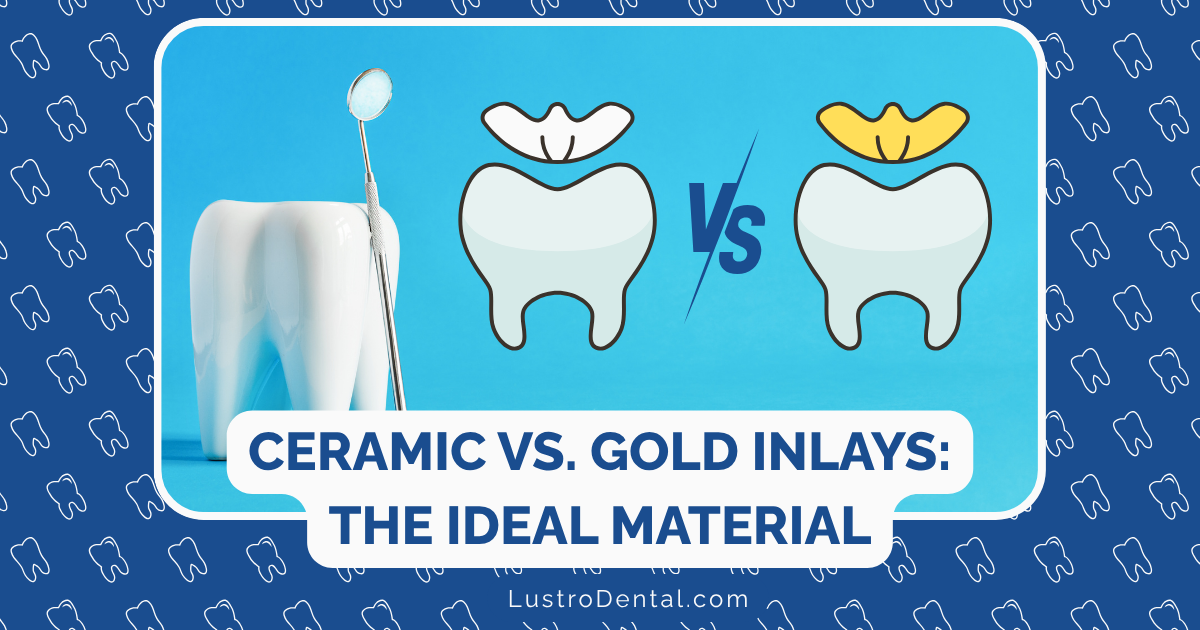Single-Visit Root Canals: How New Technology Makes It Possible

The phrase “root canal” has long been synonymous with lengthy, uncomfortable dental procedures that require multiple appointments. For decades, this reputation was well-deserved—traditional root canal therapy typically involved at least two visits spaced weeks apart, with temporary fillings, potential recontamination, and extended recovery periods.
But thanks to remarkable advancements in dental technology, the multi-appointment root canal is increasingly becoming a thing of the past. Today’s endodontic procedures can often be completed in a single visit without compromising quality or treatment outcomes.
As someone who’s passionate about helping patients understand modern dental care, I’m excited to share how technological innovations have transformed the root canal experience. Whether you’re facing an upcoming procedure or simply curious about dental advancements, this guide will walk you through the game-changing technologies that have made single-visit endodontics not just possible, but preferable in many cases.
The Evolution of Root Canal Therapy: Then vs. Now
Before diving into specific technologies, let’s understand how root canal treatment has evolved:
Traditional Multi-Visit Approach
Historically, root canal therapy required at least two appointments:
First visit:
- Diagnosis and initial access to the infected pulp
- Removal of infected tissue
- Cleaning and shaping of canals
- Placement of medication inside the tooth
- Application of a temporary filling
- Wait period of 1-3 weeks
Second visit:
- Removal of temporary filling
- Additional cleaning if needed
- Permanent filling of the canals
- Placement of a final restoration or preparation for a crown
This approach developed when instruments were less sophisticated and visualization was limited. The wait period between appointments was primarily to ensure the infection had been adequately addressed before sealing the tooth.
Modern Single-Visit Approach
Today’s single-visit root canal therapy consolidates these steps into one efficient appointment:
- Comprehensive diagnosis using advanced imaging
- Access and complete removal of infected pulp
- Thorough cleaning and disinfection using cutting-edge technology
- Immediate filling and sealing of the canals
- Placement of a permanent filling or preparation for a crown
Dr. Sarah Johnson, an endodontist at the American Association of Endodontists, explains: “The single-visit approach isn’t about cutting corners—it’s about leveraging technology to achieve the same or better results more efficiently. We’re actually providing more thorough treatment in less time.”
7 Game-Changing Technologies Enabling Single-Visit Root Canals
Let’s explore the specific innovations that have made single-visit endodontics not just possible but often preferable:
1. Cone Beam Computed Tomography (CBCT)
Traditional 2D dental X-rays provide limited information about the complex root canal system. CBCT scanning has revolutionized endodontic diagnosis by providing detailed 3D images.
How it enables single-visit treatment:
- Reveals the exact number, shape, and position of canals before treatment begins
- Identifies hidden infections, fractures, or anatomical variations
- Allows for precise treatment planning and preparation
- Reduces the likelihood of missed canals (a common cause of retreatment)
According to research published in the Journal of Endodontics, CBCT imaging can identify up to 30% more canal anatomy than traditional 2D radiographs, significantly improving first-time treatment success.
2. Dental Operating Microscopes
Modern endodontics relies heavily on enhanced visualization through specialized microscopes that provide up to 25x magnification.
How they enable single-visit treatment:
- Allow endodontists to see minute details invisible to the naked eye
- Facilitate the location and treatment of all canals in a single session
- Improve precision during cleaning and filling procedures
- Enable more conservative access preparations, preserving tooth structure
Dr. Michael Chen, a board-certified endodontist, notes: “The microscope has completely transformed what we can accomplish in a single appointment. We can now visualize and treat anatomy that would have been impossible to address reliably before this technology.”
3. Nickel-Titanium Rotary Instruments
Traditional stainless steel hand files have been largely replaced by flexible, engine-driven nickel-titanium (NiTi) instruments.
How they enable single-visit treatment:
- Clean and shape canals up to 5 times faster than manual instruments
- Follow the natural curve of canals more effectively, reducing procedural errors
- Create more uniform preparations for better filling results
- Significantly reduce operator fatigue, allowing for completion of multiple canals in one sitting
A systematic review in the International Endodontic Journal found that NiTi rotary instruments not only save time but also produce fewer procedural errors compared to hand instrumentation.
4. GentleWave® Procedure
Perhaps the most revolutionary advancement in recent years is the GentleWave® System, which uses multisonic ultracleaning technology.
How it enables single-visit treatment:
- Combines fluid dynamics and broad-spectrum acoustic energy to clean and disinfect
- Reaches complex anatomy that traditional instruments might miss
- Cleans the entire root canal system more thoroughly in less time
- Dissolves tissue up to 7 times faster than conventional methods
According to clinical data from GentleWave, over 92% of patients can complete their root canal treatment in a single visit using this technology, and 96.6% report minimal to no pain following the procedure.
5. Advanced Irrigation Techniques
Disinfection is crucial to root canal success. Modern irrigation systems have dramatically improved this aspect of treatment.
How they enable single-visit treatment:
- Ultrasonic activation enhances the effectiveness of disinfecting solutions
- Negative pressure irrigation systems improve safety and efficacy
- Heated sodium hypochlorite techniques accelerate tissue dissolution
- More thorough disinfection reduces the need for inter-appointment medication
Dr. Lisa Rodriguez, an endodontic researcher, explains: “The advancement in irrigation technology has been a game-changer. We can now achieve levels of disinfection in a single visit that previously required multiple appointments with medication between visits.”
6. Electronic Apex Locators
Determining the precise length of the root canal is critical for successful treatment. Electronic apex locators have revolutionized this aspect of endodontic therapy.
How they enable single-visit treatment:
- Provide highly accurate measurements of canal length in real-time
- Reduce the need for multiple radiographs during treatment
- Work reliably even in the presence of moisture
- Allow for more efficient and precise canal preparation and filling
Studies published in the Journal of Endodontics show that modern apex locators achieve accuracy rates exceeding 95%, significantly improving treatment efficiency and outcomes.
7. Bioceramic Filling Materials
The materials used to seal root canals have also evolved significantly, contributing to the feasibility of single-visit procedures.
How they enable single-visit treatment:
- Set properly even in the presence of moisture
- Create excellent seals to prevent reinfection
- Demonstrate superior biocompatibility
- Expand slightly upon setting, improving the seal and reducing gaps
According to research in the Journal of Dental Research, bioceramic sealers show equivalent or better sealing ability compared to traditional materials, supporting the efficacy of immediate canal filling in a single visit.
The Evidence: Single-Visit vs. Multi-Visit Outcomes
With all these technological advancements, the critical question remains: Are single-visit root canals as effective as the traditional multi-visit approach?
The scientific literature provides a clear answer. A 2023 Cochrane systematic review, considered the gold standard in evidence-based medicine, analyzed data from 33 randomized controlled trials involving over 4,000 patients and concluded:
- No significant difference in success rates between single-visit and multiple-visit root canal treatments
- No difference in long-term complications or tooth survival
- Slightly higher incidence of short-term pain with single-visit treatment, but the difference was not clinically significant
Dr. James Wilson, an endodontist and researcher at the University of Michigan School of Dentistry, notes: “The evidence is quite clear that for most cases, a well-performed single-visit root canal using modern technology is just as successful as a multi-visit approach. The key is proper case selection and the use of advanced techniques.”
Who’s a Good Candidate for Single-Visit Root Canal Treatment?
While technology has made single-visit treatment possible for many patients, it’s not universally appropriate. Ideal candidates include:
Good Candidates:
- Patients with vital pulp (the tooth is still alive but irreversibly inflamed)
- Cases without significant infection or abscess
- Teeth with straightforward anatomy
- Patients without severe symptoms
- Those with time constraints who benefit from fewer appointments
Cases That May Still Require Multiple Visits:
- Teeth with severe infection or large abscess
- Extremely complex root anatomy
- Patients with certain medical conditions
- Cases requiring additional specialist consultation
- Situations where bleeding control is difficult
Dr. Robert Garcia, a board-certified endodontist, explains: “Technology has expanded the range of cases we can treat in a single visit, but good clinical judgment remains essential. The decision should be made on a case-by-case basis, considering both the clinical situation and patient factors.”
The Patient Experience: What to Expect During a Single-Visit Root Canal
If you’re scheduled for a single-visit root canal, here’s what you can typically expect:
1. Comprehensive Diagnosis
Your endodontist will begin with:
- Review of your medical and dental history
- Clinical examination
- Advanced imaging (likely including CBCT)
- Pulp testing to confirm the diagnosis
2. Preparation and Anesthesia
- Local anesthesia will be administered for your comfort
- A dental dam will be placed to isolate the tooth and maintain a sterile field
- You may be offered additional comfort measures like nitrous oxide or oral sedation if needed
3. Access and Cleaning
- A small opening will be created in your tooth to access the pulp chamber
- The endodontist will use a microscope to locate all canals
- Rotary instruments and advanced irrigation systems will clean and shape the canals
- For cases using GentleWave®, the multisonic cleaning process will be performed
4. Filling and Sealing
- Once cleaning is complete, the canals will be dried
- Bioceramic or other advanced filling materials will seal the canals
- The access opening will be closed with a permanent filling or temporary material if a crown is planned
5. Restoration Planning
- Your endodontist will discuss the final restoration (typically a crown)
- In some practices with CAD/CAM technology, a permanent crown might even be placed the same day
- Otherwise, you’ll be referred back to your general dentist for the final restoration
The entire procedure typically takes 60-90 minutes for a front tooth and 90-150 minutes for a molar, depending on complexity.
Benefits Beyond Convenience: Why Single-Visit Root Canals Matter
The advantages of single-visit endodontics extend far beyond just saving time:
1. Reduced Risk of Contamination
Between appointments in multi-visit treatment, temporary fillings can leak, allowing bacteria to reenter the canal system. Single-visit treatment eliminates this risk by immediately sealing the cleaned canals.
2. Immediate Relief
Many patients experience significant pain relief immediately after treatment is completed, rather than having to wait through a multi-week process.
3. Lower Anxiety
For patients with dental anxiety, completing treatment in one visit means fewer stressful appointments and less anticipatory anxiety.
4. Better Compliance
Missed follow-up appointments are a significant issue in multi-visit endodontics. Single-visit treatment ensures the procedure is completed as planned.
5. Economic Benefits
While the procedure itself may cost the same, single-visit treatment reduces indirect costs like time off work, transportation, and childcare for multiple appointments.
6. Reduced Antibiotic Use
Completing treatment in one visit can reduce the need for extended antibiotic courses, supporting antimicrobial stewardship efforts.
The Future of Endodontics: What’s Next?
The technology enabling single-visit root canals continues to evolve rapidly:
Artificial Intelligence Integration
AI algorithms are being developed to assist with diagnosis, canal identification, and treatment planning, potentially further improving efficiency and outcomes.
Regenerative Endodontics
Research into pulp regeneration may eventually allow for the regrowth of the tooth’s natural tissues rather than replacing them with artificial materials.
Robotics-Assisted Treatment
Robotic systems for canal preparation are in development, promising even greater precision and consistency in treatment.
Improved Imaging Technology
Next-generation imaging systems may provide real-time 3D visualization during treatment, further enhancing precision.
Conclusion: A New Standard of Care
Single-visit root canal therapy represents one of the most significant advancements in modern dentistry. Through the integration of cutting-edge technology, what was once a lengthy, multi-appointment procedure can now often be completed efficiently and effectively in a single visit.
If you’re facing root canal treatment, discuss with your dentist whether you’re a candidate for a single-visit approach and what technologies they utilize. While not every case is suitable for single-visit treatment, the continued evolution of endodontic technology is making it an option for an increasing number of patients.
The days of automatically associating root canals with multiple appointments, temporary fillings, and prolonged discomfort are fading into history. Today’s endodontic treatment can be faster, more comfortable, and just as successful—all thanks to the remarkable technologies that continue to transform dental care.
Have you experienced a single-visit root canal? We’d love to hear about your experience in the comments below!







